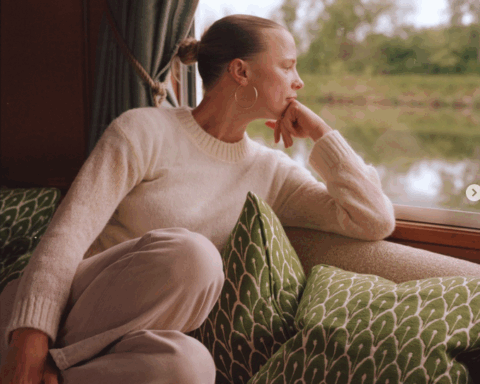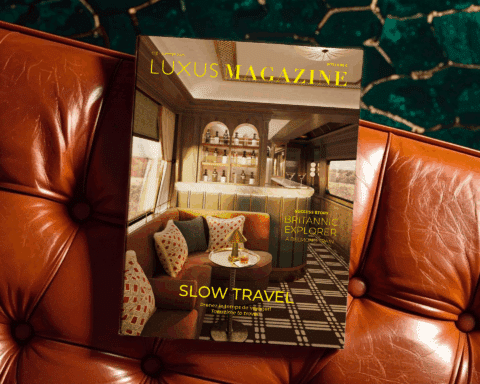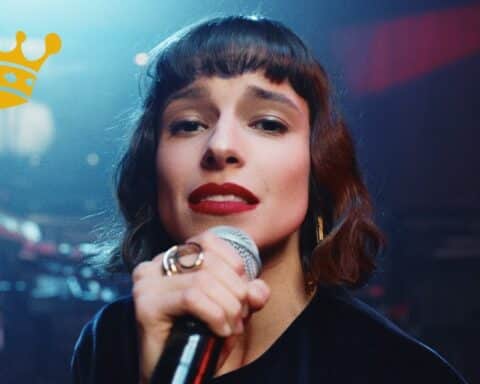For Halloween, the Walker Tribeca, New York’s luxury boutique hotel, is teaming up with the city’s iconic Haunted House, the horrific Blood Manor attraction. Housed in a former button and ribbon factory, the post-Civil War hotel has all the makings of a sleepless night.
Halloween and the hotel business? It’s a no-brainer. Just think of Stanley Kubrick’s classic Shining (1980) and the famous Room 237, set in the Stanley Hotel in the Rockies.
The hotel is the ideal setting for a chilling scenario, like the Hollywood Tower (Tour de la Terreur in France), inspired by the real-life Chateau Marmont in the Disneyland parks and featuring an adventure from the Twilight Zone series. Or the sinister motel adjoining Norman Bates’s mansion in Alfred Hitchcock’s Psycho (1960).
The hotel remains a particularly well-suited place to conjure up nightmarish experiences on October 31st: large volumes, a long history and creaky wooden floors, legendary visitors, not to mention labyrinthine circuits on several levels, often plunged into silence.
Halloween is a major commercial holiday in the USA, and many retailers are capitalizing on this frenzied search for treats, costumes and horrific experiences.
The figures speak for themselves: 70% of American consumers intend to take part in a Halloween-themed activity this year, according to a survey co-conducted by Prosper Insights & Analytics and the National retail Federation.
This craze is expected to generate $12.2 billion this year, compared with $10.6 billion in 2022. Also according to the National Retail Federation, US citizens are expected to spend $3.9 billion on decorations and $3.6 billion on candy. Costumes are not to be outdone, with adult and children’s models generating $2 billion and $1.4 billion respectively.
The Walker Hotel Tribeca intends to capitalize on this dynamic, which sees up to 1,500 temporary Spirit Halloween stores spring up around the world every season, with an atmosphere worthy of a haunted house.
What makes all the difference is offering a memorable experience, even if it means teaming up with an outside player like Blood Manor. Located at 359 Broadway, between Leonard and Franklin avenues, the attraction, which this year celebrates its 20th anniversary – counting its previous addresses – hasn’t been empty since it opened in 2017.
A horrific Halloween experience
The Walker Hotel Tribeca is decked out in Halloween colors, with its rooms and common areas decorated for the occasion.
Above all, the Bridgeton Development Group’s second New York establishment has developed a $295 package for two people.
In keeping with the festive spirit of this popular event, the hotel offers a welcome gift of sweets and a costume for two, delivered directly to the room.
To further personalize the event, guests are asked to specify whether they wish to take on a demonic, sexy, mysterious or comic role.
To encourage the discovery of other sites, the Walker Hotel Tribeca package also includes two drinks, which can be taken at any of the other Walker Hotel establishments.
But the highlight of the experience is undoubtedly the two tickets for the Blood Manor attraction.

The concept of this haunted house originated in the Chelsea district in the early 2000s, and was eventually established in the former studios occupied in 1852 by Civil War photographer Mathew Brady.
Not recommended for children under fourteen, the 10,000-square-meter exhibition features haunted halls, petrifying passageways and sinister, blood-soaked rooms – such as the crypt “where no one finds rest”. The tour also includes moments of complete darkness.
Opened in 2017 at its current location at 359 Broadway, the idea is to retranscribe New York’s reputation as the “city that never sleeps”.
Blood Manor, billed as “New York City’s premier haunted attraction“, opens just 21 days a year, mainly during Halloween but not only.
The establishment also creates a stir at Christmas time with the demonic folk character Krampus, companion of Saint Nicholas, and has already offered a bloody Valentine’s Day in the past.
The concept combines animatronics, hyper-realistic special effects, a high-fidelity sound system, dimmable lights and, above all, an army of over-trained actors in costume and make-up, some of whom have had time to perfect their roles over the years. Visitors can cross paths with monsters, ghosts and other cinematic night terrors.

As co-founder and owner Jim Lorenzo declares, “we’re a family of performers”.
Hallucination or reality, in an official statement Jim Lorenzo declares “We keep hearing stories of late-night screams of terror, flashes like an old-fashioned camera, shadows on windows”.
He adds that the place itself is said to be haunted: “The most disturbing report comes from a former employee who says she had a strange interaction with an actor in a Civil War uniform. When she realized that none of the actors were dressed in uniform, she left and never returned!”
For the attraction’s 20th anniversary, Blood Manor is offering three new rooms and new costumes designed by Abracadabra boutique designers and professional make-up artists.
A neighborhood full of dark stories
Admittedly, the Walker Tribeca Hotel could well have used its own history, or even its immediate surroundings, to fuel the most frightening tales.
Tribeca is one of New York City’s oldest suburbs. Long before it was the setting for a film festival every spring, or home to the famous red-brick lofts of the biggest stars from Daniel Radcliff (Harry Potter) to Taylor Swift, the neighborhood was the womb of the Big Apple.
Twice the size of neighboring Soho to the north, Tribeca is an acronym literally meaning “the triangle below Canal Street”. The latter was long one of the main water supply points, until large-scale pollution from the surrounding tanneries reduced it to a stagnant marsh. It’s also the historic gateway to the once deprived cities of Jersey and Brooklyn.
Located in the heart of downtown, Tribeca was an exclusively residential neighborhood until the 1840s, when the island of Manhattan became the focus of commercial activity.
When the Civil War broke out, New York was the city that provided the most men (out of 400,000 souls, nearly 52,000 perished) and munitions. In July 1860, following the terrible battle of Gettysburg won by anti-slavery Union soldiers, violent inter-racial riots broke out in Lower Manhattan.
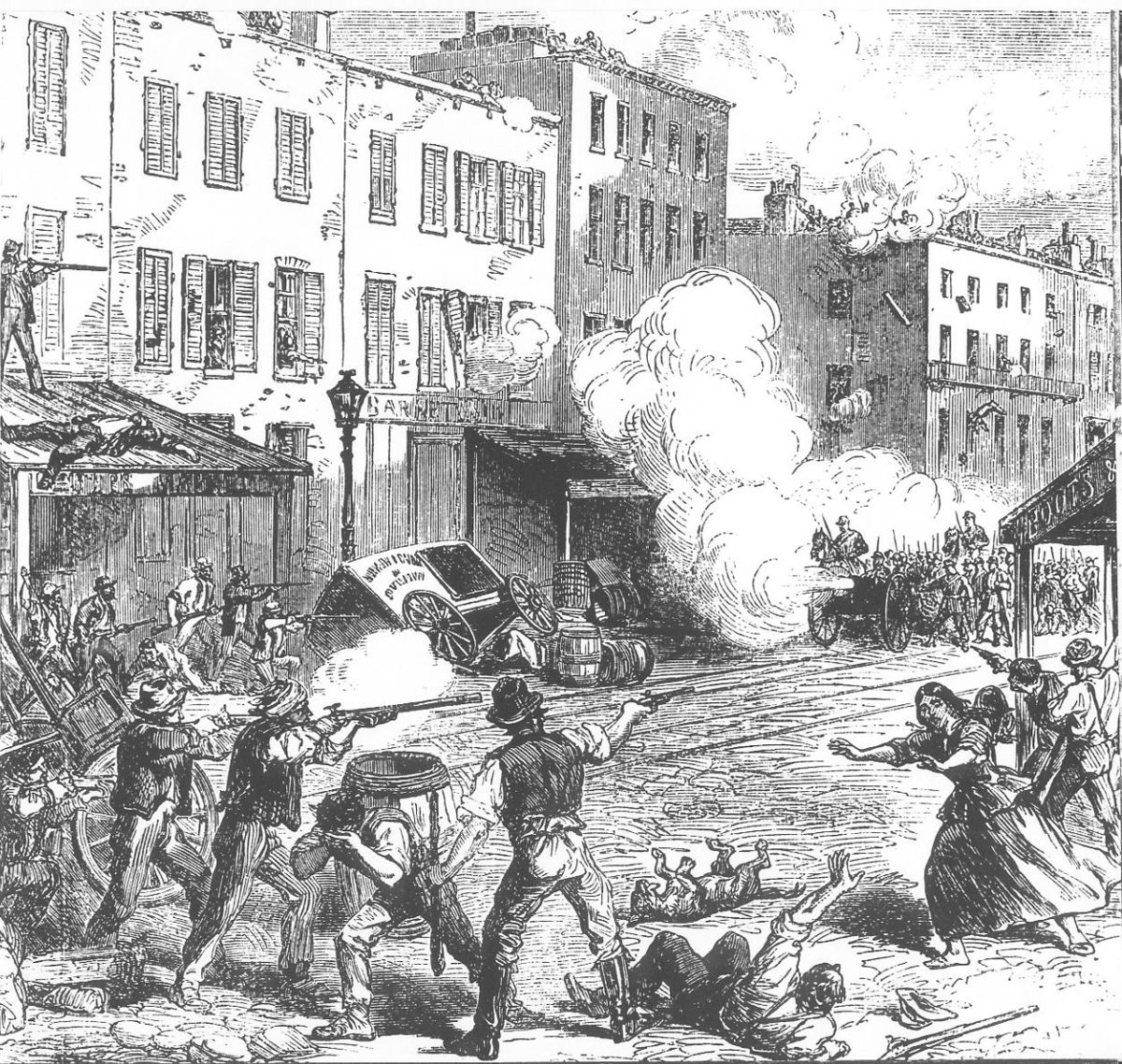
A large part of the Irish community contested the possibility for the very wealthy to exempt themselves from conscription (Draft), by appointing a replacement, often black, for $300 (the equivalent of $7,000 today). An exorbitant sum, when the average wage is between one and two dollars a day.
Order was finally restored in the city, with Abraham Lincoln sending in several military divisions. This episode – the bloodiest of the conflict outside the front line – resulted in up to 200 dead and 2,000 wounded.
When the war ended, Tribeca became home to the “egg and butter business“. Around 1870, the area saw the emergence of the industrial warehouses of New York’s food retailers and wholesalers.
With the industrial revolution, textile factories began to spring up in the area. This increased the risk of accidents in the workplace, as witnessed by the infamous Brown Building (Asch Building) – where, on March 25, 1911, 146 textile workers, most of them immigrants, died trapped on the eighth floor of a burning building. Their boss, fearing petty theft, had sealed off the second and last possible exit!
This tragedy gave rise to some forty laws to better regulate working conditions in the United States. A commemorative monument, located a 20-minute walk from the Walker Tribeca Hotel, has just been inaugurated.
A former factory
Located five minutes from the Brooklyn Bridge and One World Trade Center, Walker Hotel Tribeca is housed in a building constructed in 1899, and thus post-dating the Civil War. The building once housed a button and ribbon factory.
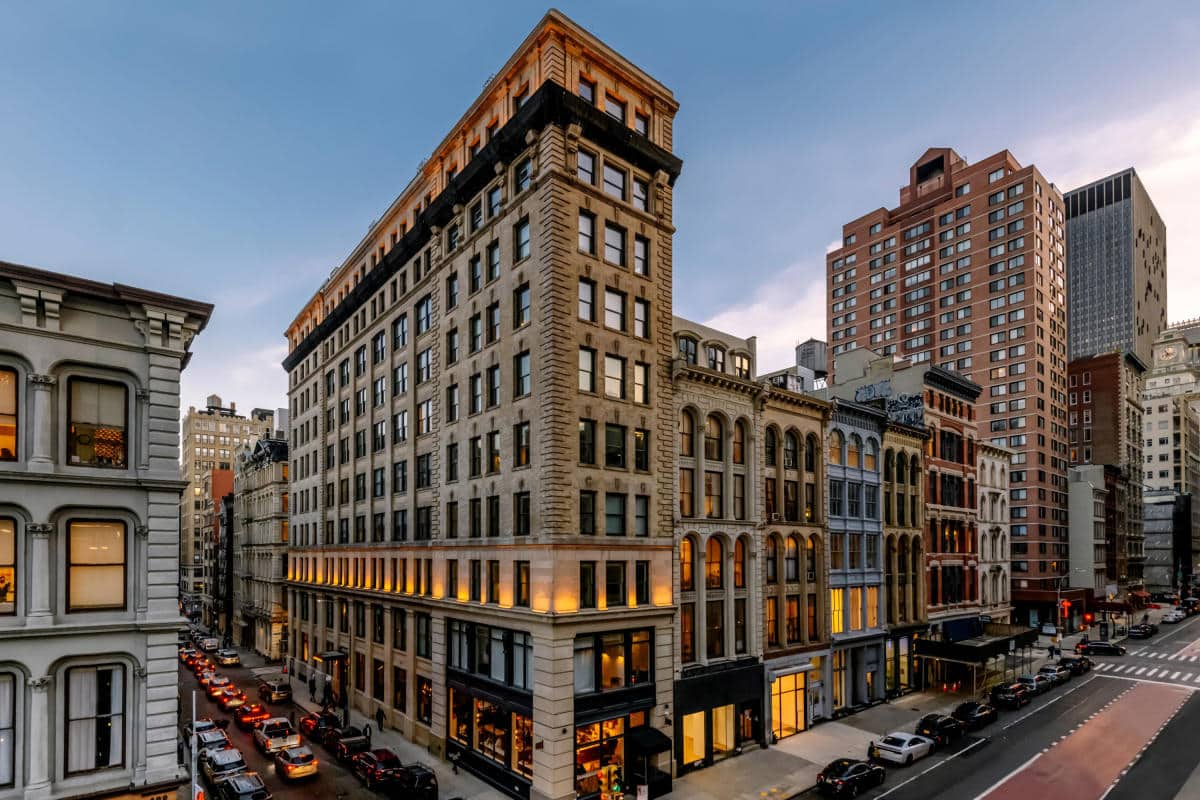
Opening in 2019, Walker Hotel Tribeca is a luxury boutique hotel with 171 rooms and four dining spaces, including Blue Bottle Coffee and The Flower Shop Rooftop Bar.
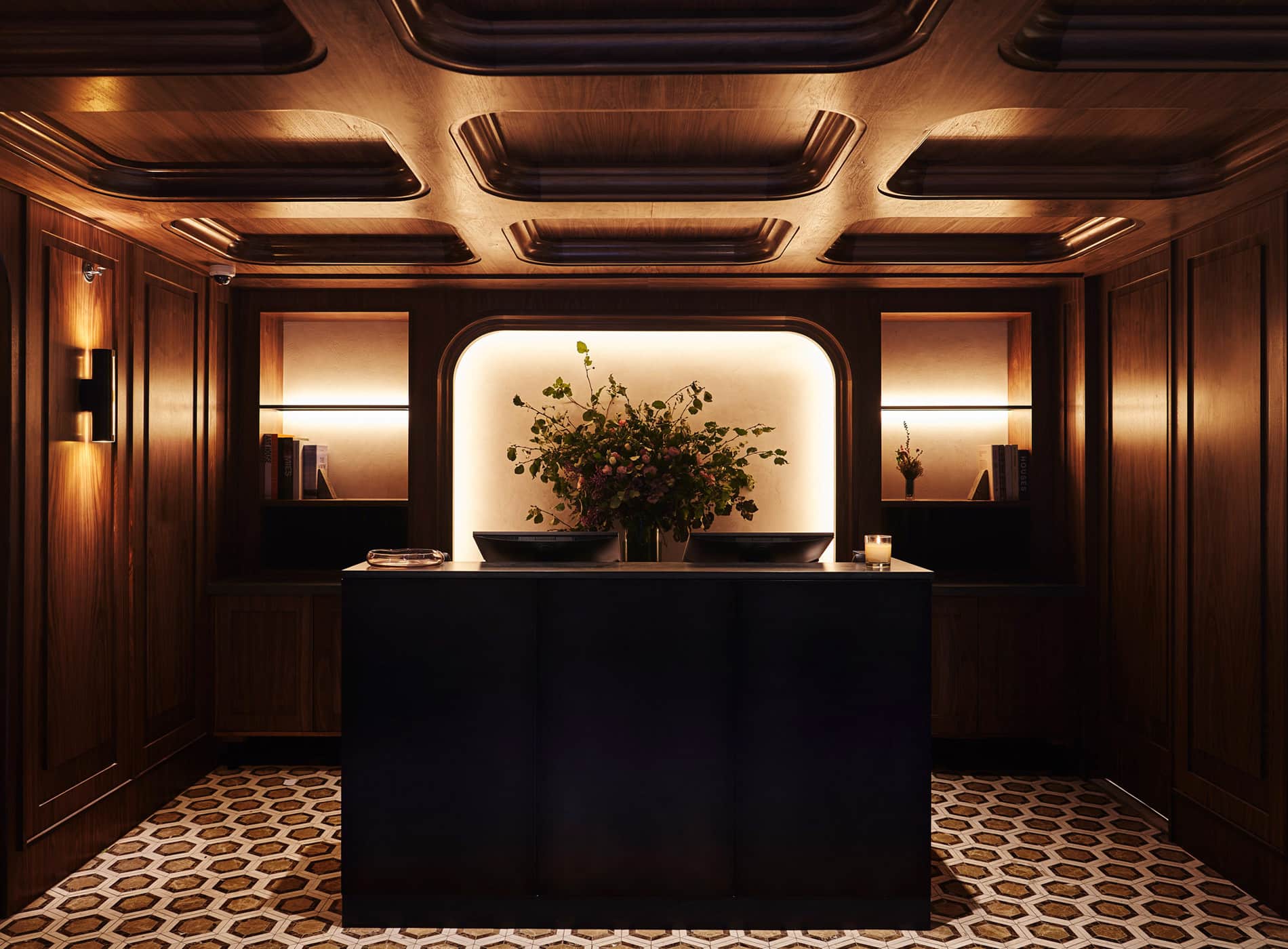
This is the sister property of the Walker Hotel Greenwich Village.
The building has the advantage of being at the crossroads of Soho, Tribeca and Chinatown.
Another advantage is that the hotel is just a stone’s throw from Cortland Alley, New York’s most filmed alley in the history of cinema.
If Halloween is the perfect excuse to embark on a horror movie marathon, the establishment has found a way for visitors to get to the other side of the screen.
To be convinced of this, you have to dare to take on the challenge of a 20-minute visit to Blood Manor, the thrill of which is guaranteed. And it’s not the star of one of the most famous late shows on the Atlantic, Jimmy Fallon, or actor and screenwriter Kevin Hart, who will deny it.
Le package exclusif du Walker Hotel Tribeca reste en vigueur jusqu’au 4 novembre inclus !
Read also > THE ORIENT EXPRESS CELEBRATES 140 YEARS WITH ACCOR
Featured Photo: © Walker Hotel Tribeca










